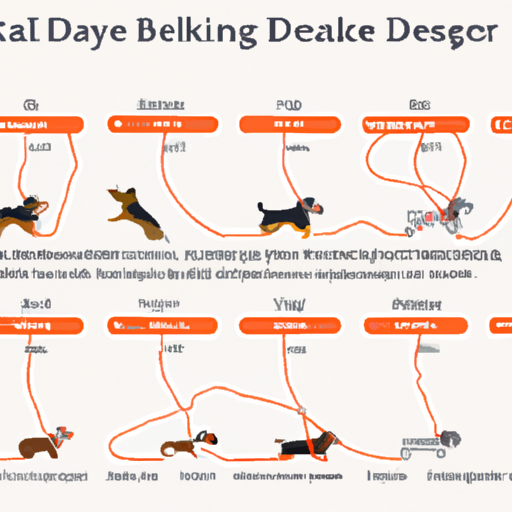Walking your dog is more than just a simple routine. It’s about providing them with the exercise, mental stimulation, and social interaction they need. But how often should you walk your dog? The answer to this question can vary greatly depending on your dog’s breed, age, health condition, and behavior.
Understanding Your Dog’s Needs
Every dog is unique and their walking needs can vary based on various factors. Your dog’s breed plays a significant role in determining their exercise needs. For instance, active breeds like Border Collies and Retrievers require more exercise than less active breeds like Bulldogs and Basset Hounds.
Your dog’s age is another important factor. Puppies usually have a lot of energy and may need several short walks, along with playtime each day. Older dogs, on the other hand, may not require as much exercise, but they still benefit from regular shorter walks.
Also, consider your dog’s health. If your dog is overweight or has health issues, they may need shorter, more frequent walks, while healthier dogs may benefit from longer walks.
Here’s a table to help you understand how much exercise different types of dogs typically need:
| Dog Type | Daily Exercise Needs |
|---|---|
| Puppies | 5 minutes of exercise per month of age (up to twice a day) |
| Adult dogs (Active Breeds) | 1 hour or more daily |
| Adult dogs (Less Active Breeds) | 30-45 minutes daily |
| Older dogs | 15-30 minutes daily |
The Benefits of Regular Walks
Regularly walking your dog has numerous benefits. Here are just a few:
-
Physical Health: Regular walks can help keep your dog in good health, reduce their risk of obesity, and increase their lifespan.
-
Mental Stimulation: Walks are a great opportunity for your dog to explore their environment, which can help keep their mind sharp.
-
Behavior: Regular exercise can help reduce behavioral issues such as barking, chewing, digging, or hyperactivity.
-
Bonding: Going for walks together can strengthen your bond with your dog.
When and How to Walk Your Dog
The best time to walk your dog is in the morning and evening, when temperatures are cooler. Avoid walking your dog during the hottest part of the day to prevent overheating.
To make the walk beneficial and enjoyable for both of you, follow these tips:
-
Use a Comfortable Leash and Collar: Ensure your dog is comfortable and secure on their leash and collar.
-
Bring Water: Always bring water for both you and your dog, especially on longer walks or on hot days.
-
Clean Up After Your Dog: Always clean up after your dog as a courtesy to others.
-
Vary Your Route: Changing up your route can provide your dog with new smells and sights, keeping their walks interesting.
What If You Can’t Walk Your Dog?
If for any reason you are unable to walk your dog as much as they need, there are alternatives. You could consider hiring a dog walker or asking a friend or neighbor to help. Another option is to provide your dog with other forms of exercise, like playtime in the yard or interactive toys.
FAQ Section
Q: How long should each walk last?
A: This depends on your dog’s breed, age, and health. Generally, a good rule of thumb is that a dog should be walked for at least 30 minutes a day. But some dogs may require more than an hour of exercise each day.
Q: Is it okay to walk my dog off leash?
A: This depends on your local laws as well as your dog’s behavior, training, and recall abilities. Some areas have strict leash laws. Even in areas where dogs are allowed off leash, they should be well-trained and not a danger to people or other animals.
Q: What if my dog doesn’t like walks?
A: Not all dogs naturally enjoy walks. If your dog seems reluctant to go for a walk, try to make it more enjoyable by bringing toys or treats, going to new places, or walking with other dogs.
Q: How fast should I walk my dog?
A: The speed of the walk should be based on your dog’s breed, size, and overall health. As a guide, walk at a pace where your dog is moving alongside you comfortably.
Remember, walking your dog is a responsibility that goes beyond just a daily routine. It’s a fundamental part of your dog’s physical and mental health, and it’s an activity that can help strengthen the bond between you and your furry friend.



